Interface Elements for Desktop > Report Designer > Report Designer for WinForms > Create Reports > Styles and Conditional Formatting in Reports > Understanding Style Concepts
This document describes how you can provide a professional look to your reports by effectively adjusting the appearance of its elements.
This document consists of the following sections.

 Appearance Properties
Appearance Properties
In the Report Designer, a report and each of its elements (bands and controls) has a complete set of appearance options (such as Background Color, Borders, Font, Foreground Color, Text Alignment, etc.). By default, these properties aren't specified, meaning that their real values are obtained from a control's (or band's) parent, which is the report itself. So, the appearance specified for a report is distributed to all its child elements. Similarly, the appearance of a band is translated to the controls it contains.
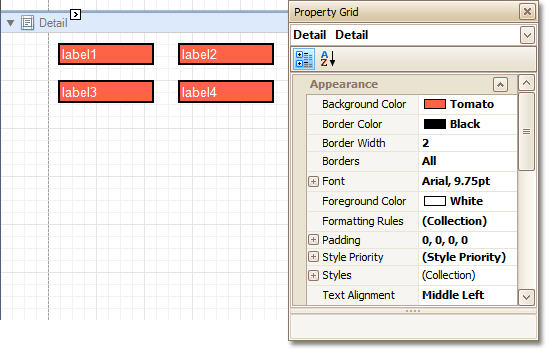
In turn, a control's appearance can be adjusted independently from its parent.
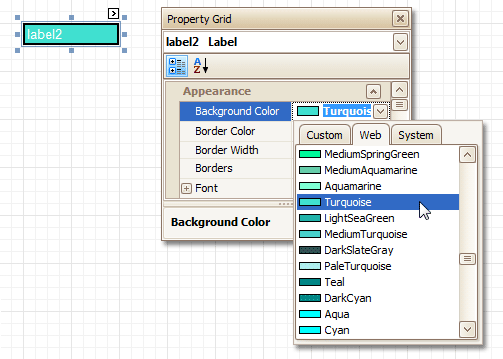
To reset a value assigned to a control's appearance property, you can right-click this property in the Property Grid, and in the invoked menu, click Reset. As a result, the control will be restored to the appearance of its parent.
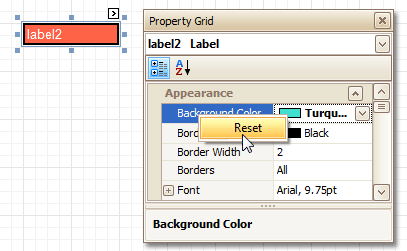

 Visual Styles
Visual Styles
In addition to the capability to specify appearance property values for every control and bands, you can create comprehensive global styles (which are stored in the report's style sheet), and then assign them to individual report elements. There are two ways to store a report's style sheets.
•Save them to external files (with a REPSS extension), and then load them to a report using its Style Sheet Path property. This approach is described in the Store and Restore Style Sheets document.
•Store the styles within the report, so that they can be easily accessed using its Style Sheet property and can be modified, if required.
Click the ellipsis button for the Style Sheet property to invoke the Styles Editor, which allows you to manage a report's style sheets, customize them, save to a file and load from it.

Note
Note that if styles contained in a style sheet loaded using the Style Sheet Path property have the same names as styles already contained in a report, the latter are overridden.
To assign a particular style to a control, invoke the drop-down list for its Style property. Then, select one of the styles stored in a report's sheet collection or select (New) to create a new style sheet.
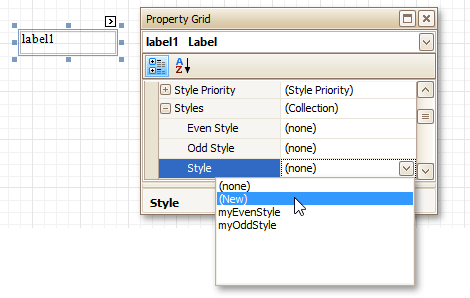
Note that if a style is assigned to a band, it is applied to all controls that the band contains.
You can also use the Report Explorer to access the style collection. Commands of the context menu allow you to add, edit, clone or delete a style.
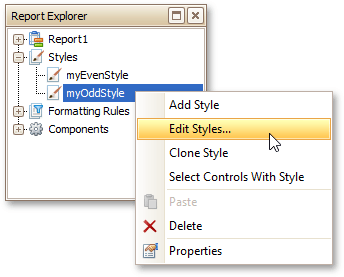
To apply style to a report element, drag it from the Report Explorer onto the required report element.

 Styles Priority
Styles Priority
A style defines the same appearance properties that are defined by a control's (or band's) appearance properties. When both styles and individual appearance settings are assigned to an element, you can control the priority of their differing options using an element's Style Priority property.
By default, most of the Style Priority's options (Use Background Color, Use Border Color, etc.) are set to Yes. This means that if any style is assigned to a control, its properties will have a higher priority than the appearance properties of this element or its parent. You can assign a higher priority to an element's appearance property by disabling the corresponding Use* property.
The following image demonstrates how the Style Priority property works.
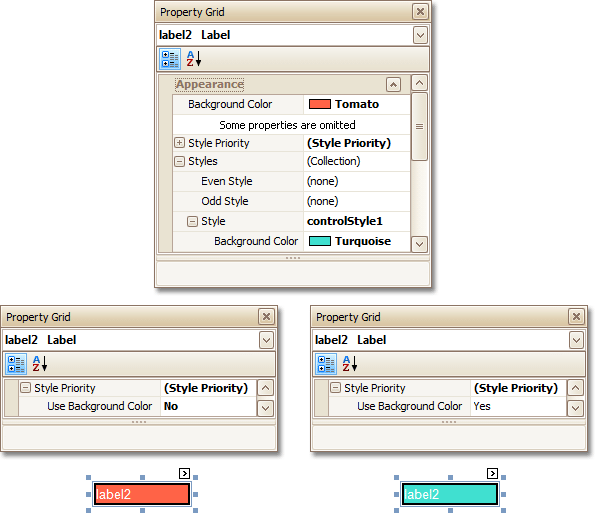
The same principles are applied to the odd-even styles feature, which allows you to alternate the appearance of consecutive data rows in your report. For details on this, refer to Use Odd and Even Styles.
Note
When conditional formatting is applied to an element, its appearance definition has the highest priority.

 See Also
See Also
Store and Restore Style Sheets
Conditionally Change a Control's Appearance
Copyright (c) 1998-2016 Developer Express Inc. All rights reserved.
Send Feedback on this topic to DevExpress.